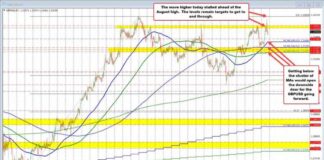The Bank of Canada is expected to make a significant rate cut of 50 basis points at its October meeting, based on recent CPI data. However, there is some uncertainty in the markets regarding this move. The Canadian economy has been struggling with slow growth and an increase in the jobless rate. Despite progress in lowering inflation, the Bank of Canada is considering a bigger rate cut to stimulate the economy. The Canadian dollar may weaken if the expected rate cut is confirmed.
In the Eurozone, last month’s PMI reports were disappointing, leading to expectations of further rate cuts by the European Central Bank. The region’s largest economies, Germany and France, are facing challenges such as weak demand and political uncertainty. If the October PMI numbers continue to disappoint, the euro may remain under pressure.
In the UK, economic indicators have been mixed, but inflation has fallen below the Bank of England’s target. The Bank of England is likely to continue cutting rates, depending on the strength of the economy. An improvement in PMI numbers could support the pound, but expectations of rate cuts may limit any gains.
In the US, the focus will be on the flash PMIs to gauge employment conditions and price pressures. The Federal Reserve is expected to trim rates, but the recent positive data may impact the timing and size of rate cuts. Corporate earnings will also be closely watched by traders.
In other regions, such as Japan, Australia, and China, upcoming economic data and policy announcements will influence market sentiment. Chinese stimulus measures aimed at the property market and consumers could impact global markets. Overall, investors will be monitoring various economic indicators and central bank decisions to navigate through the current uncertainties in the global economy.

















